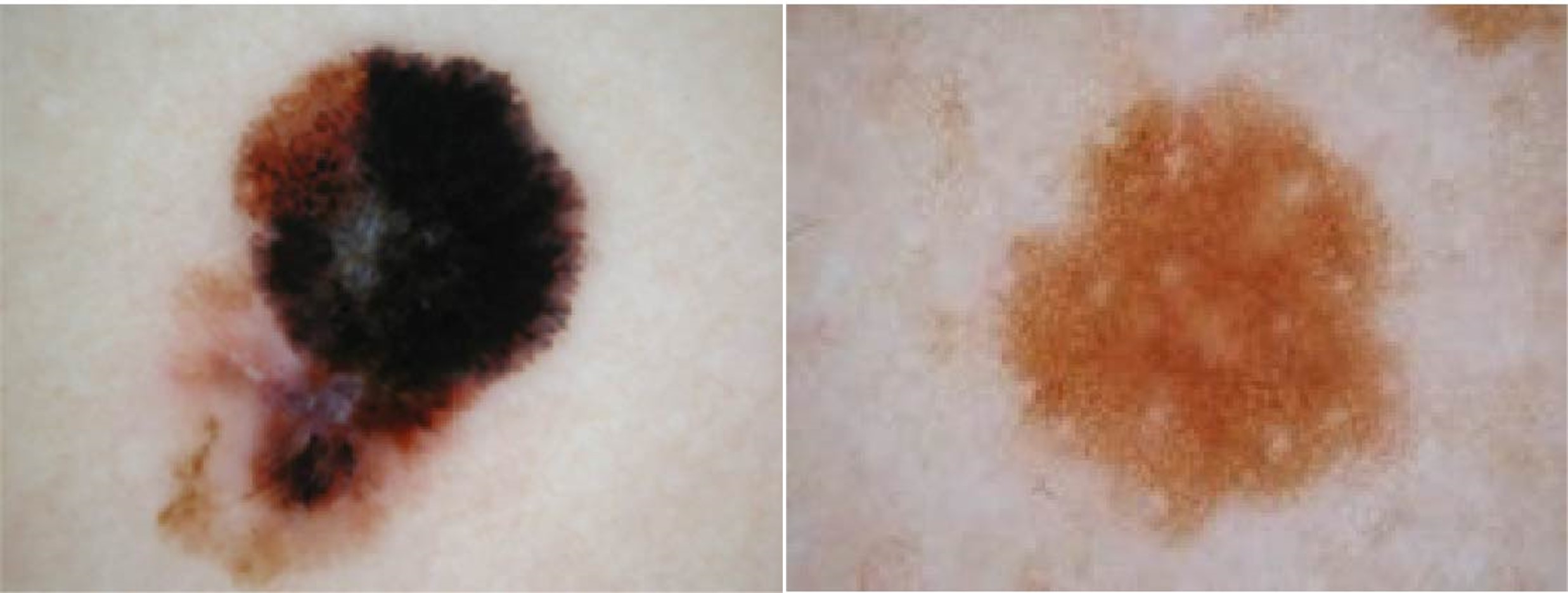The earlier you find a skin cancer, the easier and more effective the treatment is. However, it’s not always easy to tell apart harmless, healthy moles and those that need excision and histopathology analysis.
iToBoS aims to incorporate total body imaging and a holistic risk assessment, enabled by an AI clinical assistant, to help clinicians make that decision.
The easiest way of all to spot a melanoma is if you notice a new mole, or an existing mole that is changing. In fact, in Australia more than half of all melanomas are detected by patients or their partners when they notice these changes. However, for clinicians seeing a patient for the first time, or seeing them more than once but without total body photography, individual moles have to be assessed. One of the common guidelines for assessing whether a mole is suspicious for melanoma is the ABCDEFG rule:
- Asymmetry
- Border irregularity
- Colour variation
- Diameter larger than five millimetres.
- Elevated
- Firm or
- Growing for more than a month

A melanoma showing asymmetry and multiple colours, and a benign mole with a broadly symmetrical shape and consistent colour. Photos by Peter Soyer.
Clinicians have used this rule for more than 35 years to identify suspicious moles, but because border irregularity is a feature of many benign moles, and there are melanomas smaller than 5mm, these features are not always good predictors of whether a lesion is really a melanoma or not.
The iToBoS clinical assistant aims to fold in more information, including information about the distribution of the patient’s moles, signs of local or total body sun damage and other signs of melanoma risk, to give a risk score to each mole examined. There are many visible signs of increased melanoma risk, including:
- older age
- a large number of moles
- multiple moles larger than five millimetres in diameter
- skin colour
- skin response to strong sun exposure, especially if you always burn and never tan
- freckles
- red or light hair
Backed by an AI model trained on hundreds of patients and thousands of moles, iToBoS aims to use all these signs to detect real melanomas earlier, and reduce the number of healthy moles being excised.
